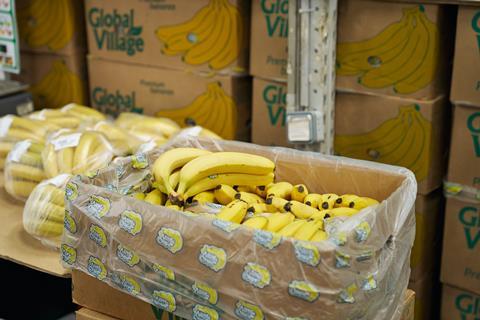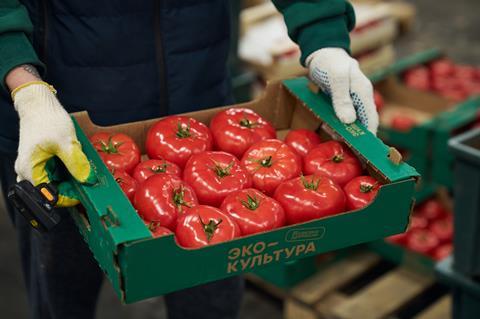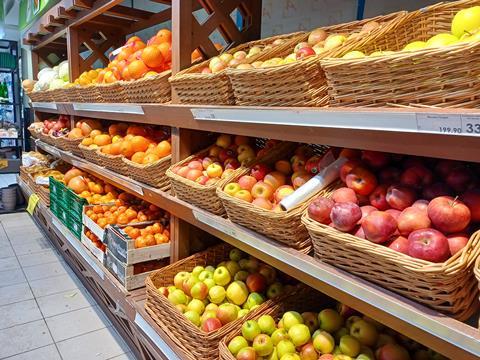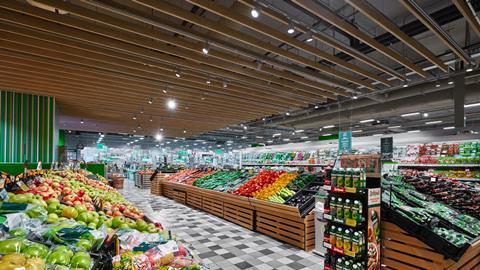Reports suggest the country has experienced its most severe price inflation in 25 years, but what does that mean for this traditionally import-dependent produce market?
Consumer prices for fresh fruit and vegetables in Russia have increased significantly in recent months due to high inflation rates, pressure from international economic sanctions, and unprecedented ground frosts in the country earlier this year, which reportedly led to the failure of some harvests.
National food industry association RusprodSoyz, which bring together the country’s leading fruit and vegetable producers and importers, reported that retail prices for apples increased by 30 per cent in the first six months of the year, reaching an average of Rbs159.8/kg (US$1.81/kg).
Even more pronounced rises were seen during the same period for carrots (up 62.8 per cent to Rbs70/kg) and beets (up 92.3 per cent, to Rbs70/kg), with increases also noted in the price of potatoes (+82.4 per cent), cabbage (35 per cent), and onions (32 per cent).
This is the highest inflation in the Russian fruit and vegetable market for the last 25 years, and most analysts expect further price increases in the second half of 2024.

Tricky trading
The general economic environment for business in Russia was already tough at the start of 2024. But since mid-June, further US sanctions have led to the suspension of dollar and euro trading on the Moscow Exchange. As a result, supply levels into the country dropped significantly and there has been a sharp growth in prices.
The situation might have stabilised to some extent since then. But, with continued uncertainty over currency conversion rates, serious doubts persist among importers about their ability to meet demand in the Russian market.
Historically, the driving force among Russia’s major importers of fruits and vegetables have been its retail chains.
X5 Retail Group, one of Russia’s leading retail chains, is one such example. Speaking via a colleague, its president Ekaterina Lobacheva told Fruitnet the company has faced some serious problems with its fruit and vegetable stocks.
“Due to weather conditions and unprecedented frosts in May, fruits and vegetables will most likely be produced in much smaller volumes in Russia this year,” she says. “We are preparing for this in advance and determining in advance what volumes of fruits and vegetables we will have to import.”
Lobacheva says Russia has plenty of procurement options in nearby countries like Uzbekistan, Azerbaijan, and Iran. “We will increase the volume of imports of fruits and vegetables, with the aim to avoid such crises that we periodically have with some types of goods, particularly with chicken eggs, when there was a sharp growth of prices for them at the beginning of 2024 and which resulted even to their shortage in the local market,” she explains.
Major to minor
However, many Russian growers believe the retailers’ concerns are exaggerated. Aidyn Shirinov, who chairs the Association of Nursery Growers and Gardeners in Stavropol, believes the consequences of frosts in the south of Russia are nothing major.
“About two-thirds of the fruit in Russia is grown in the Southern Federal District and North Caucasian Federal District, where unusually early flowering was observed this year,” he comments.
“This probably saved garden crops from the negative effects of low temperatures. In addition, in these regions the temperature did not drop so significantly.”

Nevertheless, some experts believe that, despite growing domestic production, Russia’s dependence on imports will remain high, mainly due to its limited product range and the short storage potential for most items grown in the country itself.
According to sources at Russian business magazine Expert South, foreign products are often more resilient when it comes to transportation and long-term storage. This is important for retailers, and it means those foreign suppliers have an advantage due to well-established cooperation and guaranteed volumes.
Many mouths to feed
Russia remains one of the world’s largest importers of fruit and vegetables. And until recently, the situation with regard to imports was generally stable. According to the latest data provided by agricultural regulator Rosselkhoznadzor, as of mid-April, the volume of fruit and vegetable imports into Russia actually grew 10 per cent year-on-year to 2.5m tonnes.
The biggest growth was observed in cabbage, which increased by almost 67 per cent, onions and garlic (55 per cent up), and salad vegetables (40 per cent higher). Exact figures, however, were not disclosed.
Traditionally, the major suppliers of fruit and vegetables to Russia are countries in what’s called the Eurasian Economics Space, such as Kazakhstan and Uzbekistan, as well as countries further afield – Turkey, Egypt, Azerbaijan, Uzbekistan, China, and India.
According to data from the Russian Federal State Statistic Service, Rosstat, the value of Russia’s fruit imports are estimated at US$5bn per annum and its vegetable imports are worth around US$1.5bn.
Despite Russia’s increased international isolation and its ban on direct imports from the EU, the market remains very important for many producers in former Soviet countries, as well as those for example in places further away like Ecuador, which sends around a fifth of its banana exports to the country. Most of them plan to continue sending produce to Russia in the same volume as before, for fear of losing market share.
Levan Nozadze is senior manager at Georgian Agroproduct, one of Georgia’s largest fruit and vegetable producers. He says the company has no plans to send less to Russia, despite the current market situation and tightening sanctions.
“Yes, we are working and planning to work with the Russian market,” he says. “For Georgian fruits and vegetables, the Russian market is a priority and growing.”
In such a huge market, and amid such heightened geopolitical tension, opinions will always differ. So it remains to be seen whether Russia’s compromised ability to pay can match its historically large appetite for imported fruit and vegetables.
Main image: X5 Retail





